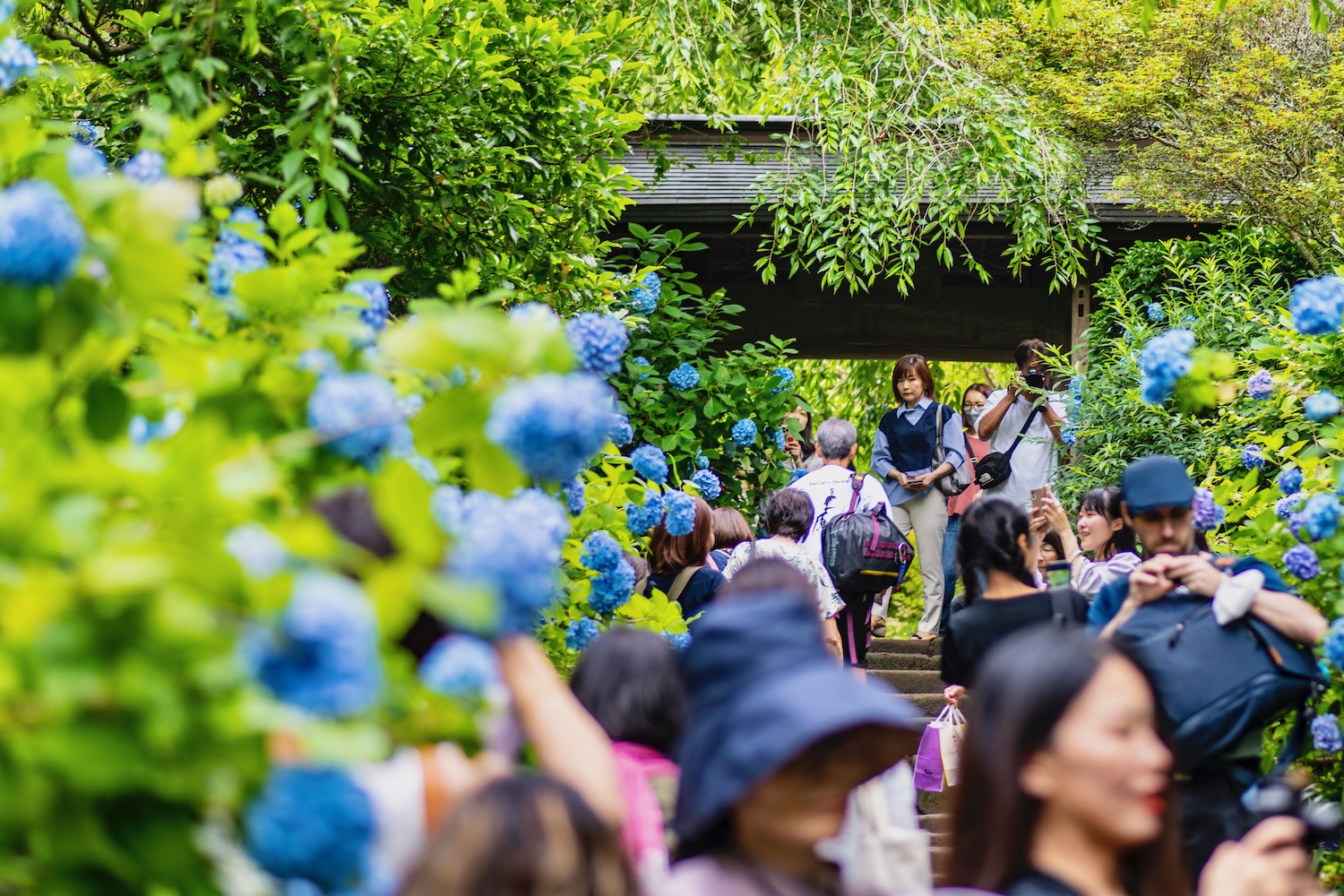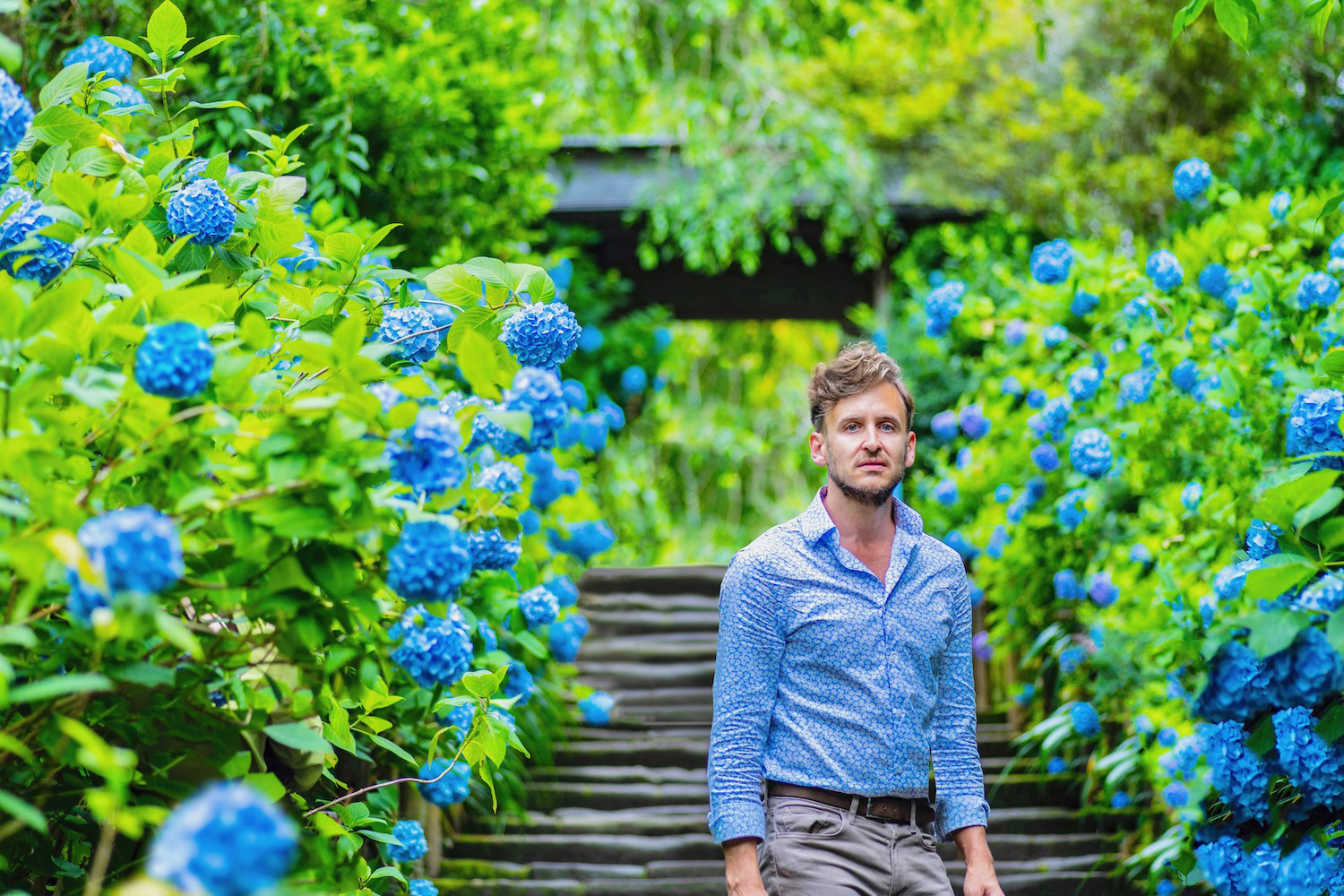I loved flowers more than most little boys when I was growing up, inspired by amazing gardens at the many houses my family lived in during the 1990s, as we moved around the country for my dad’s job. From roses, to peonies, to crocuses, to zinnias, I delighted in watching nature bloom every year.
One flower I never really cared for? The hydrangea, which I always saw as pedestrian, even snobby. Or maybe that was how my mom felt about it, and I just inherited her beliefs. Come to think of it, that’s probably it.
Of course, this post is not about psychoanalysis. Rather, I want to explain why I’ve come to be such an enthusiast for hydrangea season in Japan—and indeed, why I now consider ajisai among my favorite Japanese flowers.
Why Are Hydrangeas So Common in Japan?
Although some people (my mom and I guess myself included) associate hydrangeas with places like New England, they’re actually native to Japan. They appear in Japanese artwork going back centuries, and have been found in local fossil records from millions of years ago. Although they don’t have a reputation as such, ajisai are every bit as Japanese as sakura.
Hydrangeas have a deep emotional meaning in Japan as well. Namely, that an emperor once presented them to the family of a girl he loved, in order to apologize for his emotional malpractice, having prioritized his official duties over his courting of her. This melancholy backstory seems even more fitting when you visit Japan during hydrangea season, when the country is often wet, misty and somber in appearance.
Where to See the Best Hydrangeas in Japan
Meigetsu-in, Kamakura





If you’re looking for the #1 place to see hydrangeas in Japan, Meigetsu-in is it. Reaching this temple is simple, whether you’re already in Kamakura or coming from Tokyo. Simply ride the JR Yokosuka Line or the JR Shonan-Shinjuku Line to Kita-Kamakura Station and follow the signs. Note that while crowds are lighter first thing in the morning, lighting tends to be better in the afternoon. Best time to visit: Mid-June.
Hase-dera, Kamakura

Another place to see the best hydrangeas in Japan also happens to be in Kamakura. Located near Hase Station (the same one along the Enoden line you’ll stop if you want to visit the Big Buddha), Hase-dera features a hillside Hydrangea Path that’s absolutely blanketed in ajisai. Buy tickets online via Webket to save yourself time and trouble when you get there. Best time to visit: Mid-June.
Yokoku-ji and Yoshimine-dera, Kyoto

Kyoto has lots of hydrangeas, but surprisingly few temples where they’re the star of the show. When I was living in the city to study Japanese, my friend Kotaro (whom you might know from his sake tours) took me to a place near his home in Nagaoka-kyo. To be sure, while many locals know and love Yokoku-ji and Yoshimine-dera temples, their relative inaccessibility leaves them delightfully impervious to crowds of foreigners. Best time to visit: Mid-to-late June.
Wild hydrangeas in Japan

Hydrangeas are native to Japan, which means you’ll see them all around the country even where they haven’t been deliberately planted. One of my favorite places I encountered them recently was hiking along the Kumano Kodo in summer, which made an otherwise grueling trek beautiful. From Hokkaido all the way down to Kyushu, expect to see ajisai in the wild between early June and late July.
Urban hydrangeas in Japan

On the other hand, hydrangeas are also fixtures of urban landscaping in Japan. Whether that means bushes along busy streets, bouquets in flowers shops or artful arrangements inside temples, you can expect hydrangeas to potpourri cityscapes throughout Japan as you explore the country in the late spring and early summer.
Other Late Spring or Early Summer Flowers in Japan
In Japan in May, June or July, but can’t manage to see the hydrangeas, or arrived before or after their peak. You have other options:
- If you come in May, you can experience fuji (wisteria) or azaleas (tsutsuji), depending upon where in the country (and at what elevation) you’re traveling.
- Irises (ayame) tend to bloom in June around the same time as ajisai, and are more widespread throughout Japan as well.
- While sunflowers (himawari) are a somewhat niche flower in Japan in summer, many fields are located within easy driving (or, if you have patience, train/bus) of major cities in Japan.
Other FAQ About Seeing Hydrangeas in Japan
Where can I see the best hydrangeas in Japan?
The most iconic place to see hydrangeas in Japan is without a doubt Meigetsu-in temple in Kamakura, located just south of Tokyo. If you can’t make it here (and you should; the city’s Hase-dera also has awesome ajisai), there are other places to see the flowers as well.
What is the hydrangea season in Japan?
Depending upon where in Japan you are, hydrangeas can bloom as early as the end of May, and as late as the middle of July. If you want to see hydrangeas in Kamakura, you should target mid-June to ensure you arrive as full bloom is taking place.
What is the Japanese hydrangea myth?
Hydrangeas are native to Japan, which means that literally centuries of folklore exist around the flowers. The most famous Japanese hydrangea myth involves an ancient emperor gifting the flowers to the family of a girl he pursued, but not seriously enough. To this day, hydrangeas connect love, sorrow, regret and a request for forgiveness in Japan.
The Bottom Line
Hydrangea season is one of the best parts about coming to Japan in June and July, which are otherwise pretty unpopular months. If you can, I recommend going to Kamakura’s Meigetsu-in, which is without a doubt the most picturesque and iconic places to see hydrangeas in Japan. On the other hand, there are plenty of other spots for viewing ajisai, which is such a common flowers you’ll also see bushes in bloom in more quotidian settings. Need personalized help putting your summer trip to Japan together? I do hope you’ll consider hiring me to plan it!






